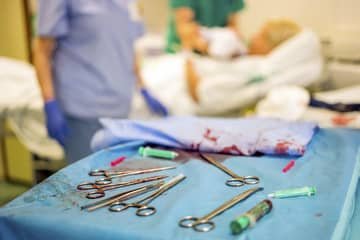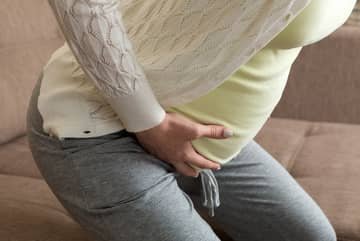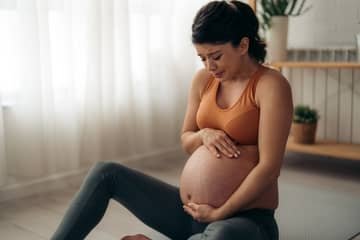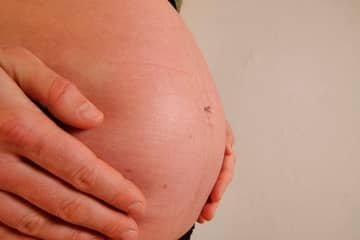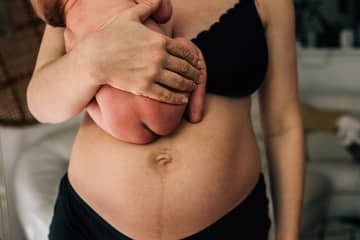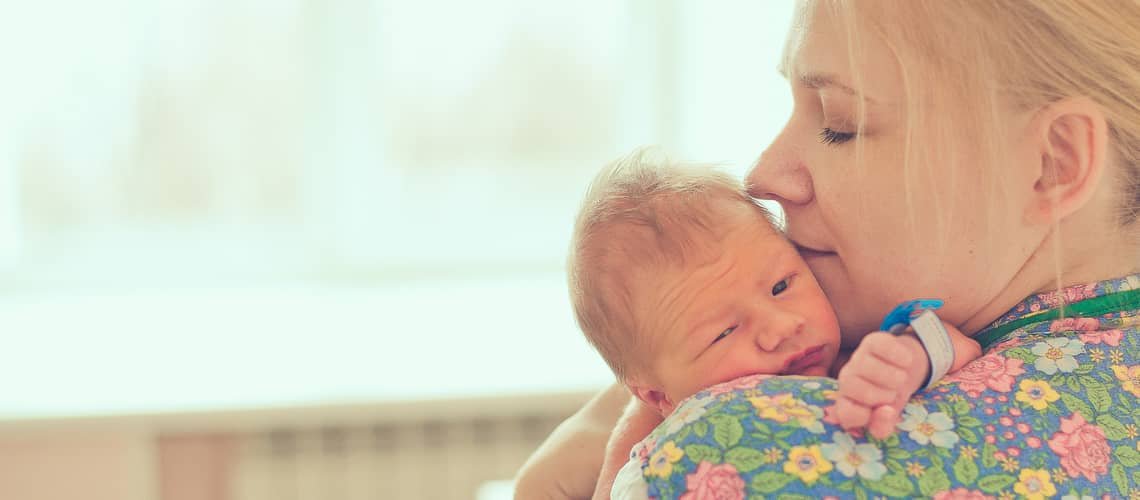
Postpartum period - meaning, diet, visits. How is it calculated and how long is the period of six weeks
The mother's organism must, of course, somehow process the enormous burden on the female body, which is accompanied not only by pregnancy, but also by childbirth itself. In the postpartum stage, a woman also gets used to new life circumstances and situations involving the care of a newborn. The time horizon in which all the described processes merge into one whole is called the postpartum period.
- What is postpartum period?
- How long is the postpartum period?
- Manifestations of the postpartum period in the female body
- Pain during the postpartum period is natural
- Postpartum period and diet
- Care of a woman in the postpartum period
- What not to do in the postnatal period...
- Postpartum period - experiences
- The most frequent questions - FAQ
- Comments
What exactly is the postpartum period and how many months does this phase of a woman's life last? Despite its name, it does not have to be a period lasting 6 weeks, it can easily be less. Recovery processes in a woman's body are related to the regeneration of the reproductive system, abdominal muscles, but also other organs that were stressed during pregnancy.
What is postpartum period?
When we talk about the postnatal period, we mean the postpartum period, which primarily consists in the recovery processes taking place in the woman's body. This mainly concerns the genital system, which had other priorities and functions in the past months, while after childbirth it gets back to its old ways.
However, the other organs in the female organism also require a few weeks of time for regeneration, which were required to work twice as hard during the entire pregnancy in an effort to supply enough nutrients to the developing fetus.
Pregnancy also leaves significant marks on the abdominal muscles, which also need a certain regeneration time in order to return to their original state. This process also falls within the postpartum period. However, six months is also a postpartum stage, during which the mother touches her newborn offspring. By touching, they get used to each other and get to know each other.
It is a truly magical period in which the intensity of a woman's emotions reaches unprecedented peaks. It is therefore necessary to devote enough time to the child, as well as to yourself, while routine tasks related to household care should be of secondary importance.
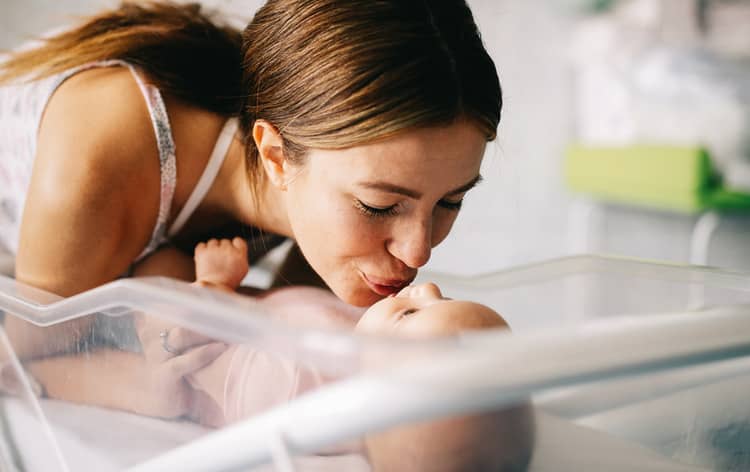
How long is the postpartum period?
The six-month period consists of two consecutive periods, both of which are characterized by other important processes for the female body. So how is the postpartum period calculated? Early or the early trimester refers to approximately the first 10 postpartum days, when recovery and wound healing occur after the birth itself, regardless of whether it was natural or required medical intervention.
The later six weeks is the time period of the next six to eight weeks, which is characterized by the return of the woman's physiology and anatomy to the original prenatal state. However, the original state does not mean an athletic figure without a single extra kilo, rather it is the return of the organs to their original place due to the decrease and reduction of the uterus.
Manifestations of the postpartum period in the female body
During the postpartum period, a woman's body goes through a lot of changes. While many take place inside the organism, the external ones are visible to the naked eye. From the external aspect, it is mainly about natural changes in weight due to the birth of a baby and the associated expulsion of the placenta, amniotic fluid and the loss of a larger amount of blood.
In the postpartum period, the weight of most women returns to its original level, while breastfeeding, and therefore breast enlargement due to the production of breast milk, does not have a revolutionary effect on the weight of a woman's body.
Although the size of the belly and the appearance of a woman on the outside may indicate the exact opposite, it is necessary to realize that the appearance of a woman's body in the postpartum stage is related to a number of internally occurring processes and changes during the postpartum period.
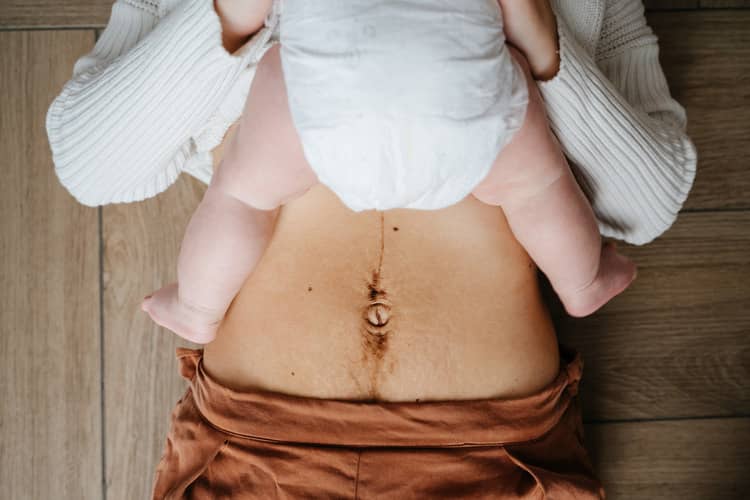
Changes in the genital system during the postpartum period
The death and separation of the surface layer of the uterine mucosa is initially manifested by bleeding from the vagina after childbirth. These so-called cleansing lasts approximately three weeks, while the color of the secreted secretion gradually changes. While in the first postpartum days it is a distinctly red secretion containing blood clots or tissue fluid, on the third to fourth day the secretions darken to brown.
In the following days, the blood vessels are closed, due to which the color of the secretions changes to yellow. After the disappearance of red and white blood cells, it takes on a white color until it turns into transparent mucus. During the postnatal period, it is necessary to observe strict hygiene, which consists not only in thorough washing, but especially in the regular replacement of sanitary napkins.
In the case of bleeding, it is necessary to mention the fact that menstruation and menstruation are not necessarily excluded. Breastfeeding is a very influential factor in this matter. If the production of breast milk stops for some reason, menstruation can return even before the end of the postpartum period. If breastfeeding goes smoothly, menstruation may not appear for a long time. However, if a woman starts to bleed due to the menstrual cycle, there is no need to interrupt breastfeeding.
Another natural process taking place in the female body during the postpartum period is the wrapping of the uterus. It is a gradual reduction of this female genital organ to its original size. Not only does the weight of the uterus, which reached the level of 1,000 grams during pregnancy, decrease over the course of postpartum period, muscle fibers also tighten, which can often be accompanied by pain similar to contractions. The uterus subsequently descends to its original place in the small pelvis.
Childbirth also leaves certain consequences on the cervix, which, due to the great pressure during childbirth, slightly opened and sagged, while its edges may also be disturbed in a certain way. Over the postpartum period, gradual closure occurs. While the neck of the cervix takes the shape of a cylinder, the cervix creates a slit.
If the birth takes place vaginally, or in a natural way, the postpartum period is the period when the vagina regenerates. During the first three weeks after childbirth, it slowly returns to its original state, but its elasticity decreases due to childbirth. Its surface also acquires a smoother character, while the walls of the vagina become thinner.
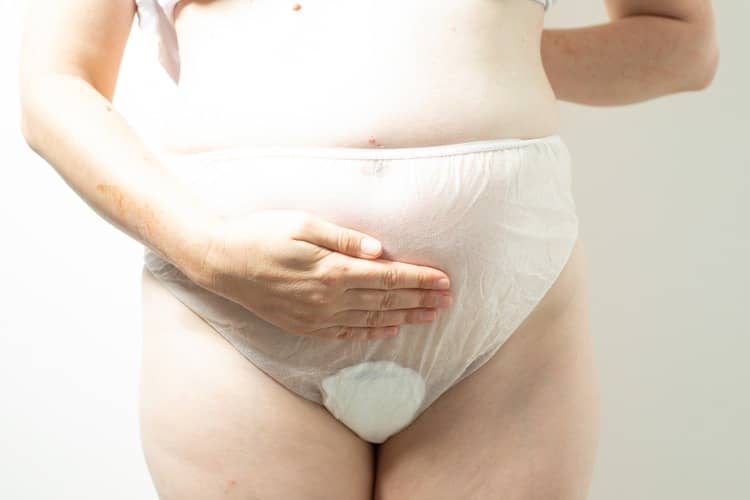
Changes in other body systems during the postpartum period
During pregnancy, the entire organ system of a woman participates in the proper supply of nutrients and care for the developing fetus. Therefore, it is no surprise that during the postnatal period there are changes outside the female genital system.
Since the heart beats and pumps blood in two during pregnancy, there is a gradual decrease in cardiac output during the postpartum period. Diaphragm and resting heart rate also decrease. Around the middle of the postpartum period, blood volume also decreases, while the content of white blood cells increases.
Changes also occur in the digestive tract, whose functions return to normal. Due to the influence of the descending uterus, all organs return to their original place. However, the speed of peristaltic movements is nowhere near the state before pregnancy. That is why defecating difficulties are characteristic of the postnatal period.
Childbirth can also cause difficulties in excretory processes, specifically in the urinary system. This system is extremely susceptible to infections, which can lead to insufficient emptying in the first days of the menstrual cycle. Painful urination is even typical for the first postpartum hours. If a woman notices insufficient bladder emptying after giving birth, it is primarily necessary to apply various methods to trigger the urge to urinate, while the last solution is the so-called coiling consisting in emptying the bladder by inserting a tube.
Hormonal changes are a natural part of pregnancy and the postpartum period as such. Until approximately the 16th day, the pregnancy hormone hCG (human chorionic gonadotropin) gradually decreases, while the levels of estrogens and progesterone also decrease.
However, due to the wrapping of the uterus and lactation, oxytocin is released. The mentioned deviations of hormonal levels in the female body are evidently reflected not only in the appearance of the external anatomy of the woman, but also in the psychological state of the mother. While for some mothers these fluctuations are referred to as "Baby blues", for others the extreme changes can develop into more serious postpartum depression.
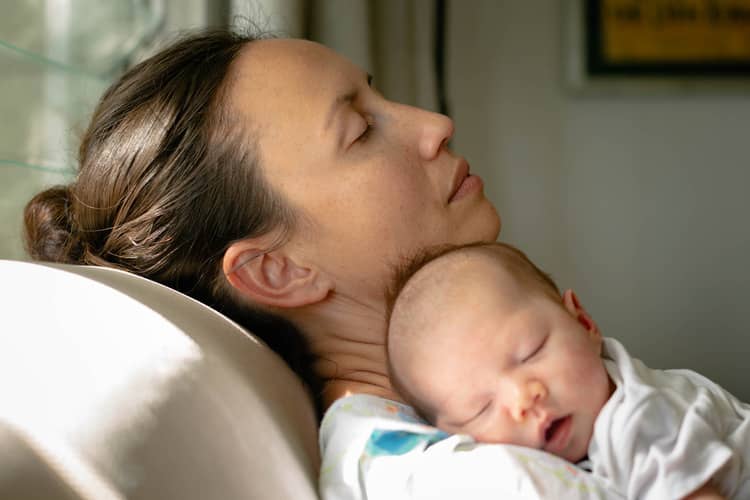
Pain during the postpartum period is natural
Childbirth means a tremendous burden for the woman's body, which manifests itself in the form of muscle pain during the postpartum period. These are characteristic not only for the parts of the body that are used the most during childbirth, but also for the back or both pairs of limbs. The hips can also be a source of pain. Muscle pain due to childbirth can be softened by a warm shower, a massage of a gentler nature or by introducing moderate physical activity into the daily routine.
Pain in the intimate area is very unpleasant, but completely normal after childbirth. Especially in the case of a vaginal delivery, which ultimately required cutting the perineum. Directly after childbirth, it is advisable to apply cooling compresses, while at home it is advisable to use the healing bath method for healing postpartum wounds. This special bath consists of filling the lavatory with water at body temperature and then mixing in a decoction of rapeseed. After that, it's enough to just sit and soak in such a bath for five to seven minutes. It is advisable to undergo the described treatment at least twice a day.
Headaches are common companions of women in their six months. It can appear either due to hormonal changes or as a side effect of epidural analgesia. While in the first case it is possible to eliminate the pain with sufficient rest, the significant effects of the epidural often disappear only after hospitalization and the use of the appropriate medication.
Sixth trimester is characterized by the production of breast milk, which is often accompanied by pain in the breast area. Due to this process, the breasts are very sensitive and warm, which can lead to an increased body temperature in the mother. The best medicine for this type of pain is frequent breastfeeding.
Postpartum period and diet
As part of the early stage of pregnancy, i.e. the period when many mothers are still in the maternity ward, or have only recently returned home from it, it is advisable to supply the body with food that supports the proper function of the digestive tract. The processes of digestion and subsequent excretion are not at all that simple in the postpartum phase. Food from home is primarily recommended, because the food served in most maternity hospitals can have the opposite effect on digestive processes. A lot of nutrients with a high quality level are found in a strong broth from a deboned chicken. It should, of course, include root vegetables, but also herbs, chicken meat or skin.
After giving birth, it is advisable to include cereal porridge with a mixture of vegetables or dishes made from boiled apples in the menu. You should avoid milk, sugar, oily and fatty foods, but also low-quality animal sources.
As for supporting the production of breast milk, it is advisable to take omega-3 fatty acids from an animal source, which can be taken in the form of high-quality nutritional supplements. In addition to diet, it is important to follow a drinking regimen for breast milk, which should consist of various teas and waters designed for breastfeeding women, but magnesium-containing waters are also recommended.
As we have already mentioned above, mothers of newborns should avoid sugar as much as possible, and the same is not true of fluids. They should definitely not be in the form of carbonated and sweetened drinks.
Certain herbs with estrogenic effects, such as fenugreek, fennel or anise, are much more suitable for the effective production of breast milk. In this case, it is necessary to bear in mind that the real effect and possible side effects of individual herbs were determined on the basis of natural medicine rather than professional studies.
In the later phase of the postpartum period, it is also necessary to take into account the good of the baby itself. It is therefore necessary to eliminate any foods that promote bloating from the menu. These include, for example, sauerkraut and various legumes.
In order for the milk, and thus also the body of the child, to receive quality nutrients, the mother should avoid semi-finished products, fried, processed or canned foods, as well as sweets and important allergens. Milk should still not be part of a nursing mother's diet.
The most important part of the mother's daily intake should be mainly fruits, vegetables, nuts, cereals, animal foods (preferably from home breeding), various vegetable oils and some legumes without the risk of digestive irritation. All food should, of course, come from quality sources.

Care of a woman in the postpartum period
Caring for a woman during the postnatal period mainly consists in relieving the burden as much as possible from common tasks in the home, for which she has neither the energy nor the mood. During the postpartum period, the mother should first of all focus on creating a relationship with the baby and post-partum regeneration of her own body.
In addition to physiological changes, after childbirth there is a great rush of emotions that affect every woman. This means that it is equally important to take care of their mental well-being. This can very quickly go from a harmless and normal period of sadness called "Baby blues" to a serious case of postpartum depression.
Therefore, it is appropriate to constantly support the woman and assure her of the correctness of the actions in connection with the care of the baby. The woman's surroundings and family should definitely avoid any teasing remarks and meaningless advice regarding the care of newborns.
What not to do in the postnatal period...
When the words "postpartum period" comes up, most people automatically associate this period with the prohibition of intimate coexistence between a woman and her partner. A certain disruption of sex life is completely natural with the arrival of a child. Especially in cases where childbirth caused painful postpartum injuries. In addition, taking care of the child and maintaining mental well-being at a healthy level is already difficult due to fatigue and various types of pain during the postpartum period. Therefore, it is recommended to refrain from any sexual intercourse until the end of the postnatal period. The reason for this recommendation is also the susceptibility of the female genital system to infections, which can cause more problems during regeneration after childbirth. Care should be taken during sexual intercourse after postnatal period, because there may be painful moments caused by the insufficiently moistened mucous membrane of the vagina. For this reason, patience on both sides is essential.
Postpartum period is already a hectic period in a woman's life, so you really don't need to complicate it with negative thoughts about your postpartum figure. Intense exercise with the aim of losing extra pounds is the last thing a woman in her six months should do. However, this does not mean that a woman should not move at all. Exercise with a focus on the regeneration of weakened muscles, especially in the areas of the pelvic floor, abdominal wall or lower limbs, is more than welcome. Such a form of movement helps with the physiological changes that a woman's body goes through during the postpartum period. In connection with the abdominal muscles, it should be noted that their strengthening should exclusively concern the oblique abdominal muscles. Exercises to strengthen the rectus abdominis muscles are recommended to be left for the period after postpartum period. For the first three postpartum months, an active sportswoman should also take a break from regular sports, such as tennis or running.
Two words that also do not go together, but are often inflected in the same sentence, are postpartum period and visits. Relatives and friends are naturally curious about the addition to the family, which sometimes leads them to unannounced visits. Women in the period of postpartum period often do not know where their head is, so receiving visitors with a tip-top appearance, a tidy household and a prepared buffet for guests does not often happen. From the side of the neighborhood, it is advisable to leave the visits until after the end of the semester. Possible visits to help with the household or with the baby itself are better consulted with the newborn's mother herself. If a woman does not want any visits, announced or unannounced, during this intimate and sensitive period, it is a good idea to forward this information to everyone you know.

Postpartum period - experiences
Since every pregnancy or birth is different from woman to woman, it's no surprise that the same rule applies to the postpartum period. In connection with birth by caesarean section, the discussants on a well-known internet forum answered a question about the period of bleeding after childbirth. Many women reported that the bleeding stopped after a few days and then started again. They described the duration of such a state of the female body as approximately a two-month affair. In the case of some discussants, the bleeding, as well as the overall menstruation, stopped after postpartum period. Bleeding again five weeks after the classic birth upset another new nursing mother, who was advised by the panelists to see a doctor, who can clarify whether it is the first period since giving birth, or some complications with the regeneration of the genitals during the postnatal period.
The most frequent questions - FAQ
In our article on the postpartum period, we have tried to cover all aspects related to this topic. Did you not find what you were looking for in the article and do you still have any questions about this topic? Write to us in the comments what you are interested in, we will answer as soon as possible.
How to replace sweets during the six-month period?
Is hair loss in the postpartum period?
Why is it necessary to urinate regularly during menstruation?
Is it really necessary to go for a medical examination after the end of the six-month period?
If I visited a health specialist during pregnancy, do I have to go to him for a preventive examination after the end of the postpartum period?
Pridať komentár

